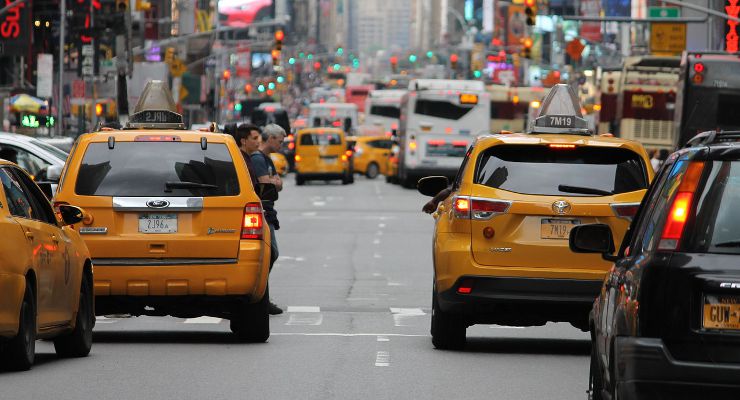
Today, we are facing a sharing revolution: the rise of the sharing economy. What is sharing economy? Many of us are familiar with app-based ride services like Uber and Lyft; each of these booming companies provides so-called ride sharing experiences where app-based drivers pick up people in need of a ride.
This phenomenon is leading to an entire new way of doing business; and as a result, new apps and services are springing up every day. How user seize on these businesses and how they grow as a result is still unknown.
What is Sharing Economy
Let’s take a deeper look into the basis and the history of the sharing economy boom. The sharing economy goes by many names. Some call it the shareconomy, the peer economy, or simply collaborative consumption.
Most people started to become familiar with this peer economy concept when Uber began to make waves in 2009. At the time, there were few sharing economy startups in existence and the industry was in its early stages.
Uber started out as Ubercab and had the unique model that employed the use of a Smartphone application when hailing privately employed taxicabs. Uber drivers were different than standard taxi drivers, which caused a large commotion amongst the licensed taxi drivers who called the new class of drivers “pirate taxis.”
Currently, 160,000 people drive for ridesharing service Uber and the Uber sharing economy continues to grow at a steady pace. The company now operates in 66 countries and 507 cities around the world.
As a matter of fact, every month 50,000 new Uber drivers take to the roads around the world. As a result, the sharing economy business model has become the source of myriads of professional driver’s livelihood.
If you think about it, the Uber sharing economy has had quite an economic impact. Currently, all of the major companies are still in need of skilled drivers to provide ridesharing services.
In addition to Uber, there is Lyft, which shares a direct ridesharing ecosystem with Uber. Amazingly, despite the dominance of its main competitor, Lyft is also doing quite well for itself. It currently operates in 65 cities and is consistently looking for new drivers for its 100,000 registered users.
Other Sharing Economy Startups That Have Succeeded
As mentioned previously, Uber shares an ecosystem with a plethora of major sharing economy based businesses. Of course, there’s Airbnb, which many feel started the sharing economy craze; with this business, you can rent a vacation home or house for a short period.
Typically, this housing is occupied, with the current tenant away for the duration of your stay.
Sharing Economy Apps
Currently, the top services all have sharing economy apps on every conceivable mobile platform, including Android, iOS, and Windows Phone. Let’s take a look at the top contenders in the market today:
Ride Sharing Options That Have Apps
• Uber – The Uber app now comes standard on some devices like Samsung’s S6 through S7 line of phones. This is the undoubted king of the field with the company becoming larger than many public transportation systems.
• Lyft – Number two for ridesharing. Lyft continues to grow and capture many of the drivers who would like a smaller option than the massive Uber.
• Sidecar – This app lets people with room in their car pick up addition travelers. It’s very similar to early Uber and operates on a smaller scale.
• Zipcar – Zipcar actually predates Uber by a few years. This ridesharing service is part rental company part sharing economy business.
Sharing Economy Startups
In addition to the mainstay companies like the ones we mentioned previously, there is a new crop of startups that are starting to step into the sharing economy limelight. Here are a couple of the new startups that are just starting to make waves.
Just Park – Finding a parking spot can be one of the most frustrating pursuits that a driver can engage in. On top of the annoyance, parking is expensive; parking lot ownership is a 100 billion dollar business that is financially draining to vehicle owners.
To make things easier, some enterprising entrepreneurs have developed the Just Park space sharing service. With Just Park, you can park in privately owned spaces; as a matter of fact, the company was formerly called ParkAtMyHouse.
Getaround – This is another way for enterprising individuals to make money off of the ridesharing boom. Users simply rent out their car to other users on the Getaround network. The company manages all of the rental processing and card payment structure.
This is also an excellent way to test drive a car that you’ll love to check out.
Sharing Economy Business Model
There are several types of business models within the sharing economy, but everyone agrees that the sharing economy business model centers on transactions that center on people, not corporations. Even with massive ridesharing businesses like Uber, the transactions are much more personal with Uber serving as more of a middleman than an employer for its drivers.
This type of sharing business model is an indicator that people want more personality in their services and that perhaps businesses have become too impersonal. It’s much easier to interact with someone who is working as a driver part time than with their employer.
Despite this personal touch, according to Fastcoexist, the business model of just about every sharing economy business is in some way enabled by Smartphones.
Conclusion
The sharing economy is still in its nascent stages with many new platforms appearing almost daily. Existing sharing economy businesses continue to flourish in this new system and the impact of these businesses will increasingly be felt in our everyday lives. How will you make this new system work for you?
